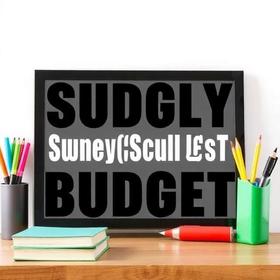For the 2025-26 school year, there is 1 public middle school serving 778 students in 28303, NC.
The top-ranked public middle school in 28303, NC is Westover Middle School. Overall testing rank is based on a school's combined math and reading proficiency test score ranking.
Public middle school in zipcode 28303 have an average math proficiency score of 26% (versus the North Carolina public middle school average of 48%), and reading proficiency score of 42% (versus the 50% statewide average). Middle schools in 28303, NC have an average ranking of 3/10, which is in the bottom 50% of North Carolina public middle schools.
Minority enrollment is 93% of the student body (majority Black), which is more than the North Carolina public middle school average of 56% (majority Black and Hispanic).
Best 28303, NC Public Middle Schools (2025-26)
School
(Math and Reading Proficiency)
(Math and Reading Proficiency)
Location
Quick Facts
Rank: #11.
Westover Middle School
(Math: 26% | Reading: 42%)
Rank:
Rank:
3/
Bottom 50%10
275 Bonanza Drive
Fayetteville, NC 28303
(910) 864-0813
Fayetteville, NC 28303
(910) 864-0813
Gr: 6-8 | 778 students Student-teacher ratio: 19:1 Minority enrollment: 93%
28303, North Carolina Public Schools (Closed)
School
Location
Quick Facts
1429 Skibo Rd
Fayetteville, NC 28303
(910) 864-5438
Fayetteville, NC 28303
(910) 864-5438
Gr: K-5 | 200 students Student-teacher ratio: 11:1 Minority enrollment: 91%
Frequently Asked Questions
What are the top-ranked public middle schools in 28303, NC?
The top-ranked public middle schools in 28303, NC include Westover Middle School.
How many public middle schools are located in 28303?
1 public middle schools are located in 28303.
What is the racial composition of students in 28303?
28303 public middle schools minority enrollment is 93% of the student body (majority Black), which is more than the North Carolina public middle schools average of 56% (majority Black and Hispanic).
Recent Articles

Public School Open House & Enrollment Season Guide
A parent-focused guide to the public school open house and enrollment season, with expert questions, timelines, and decision tips.

School Supply Budget 2026: Fees, Books, Tech Costs
School Supply Budget 2026 guide for parents, covering fees, textbooks, technology, and hidden extras to plan ahead.

Education Funding in America (2025 Update)
Comprehensive 2025 update on public school funding in America, new federal and state policies, per-pupil spending, and equity challenges.
